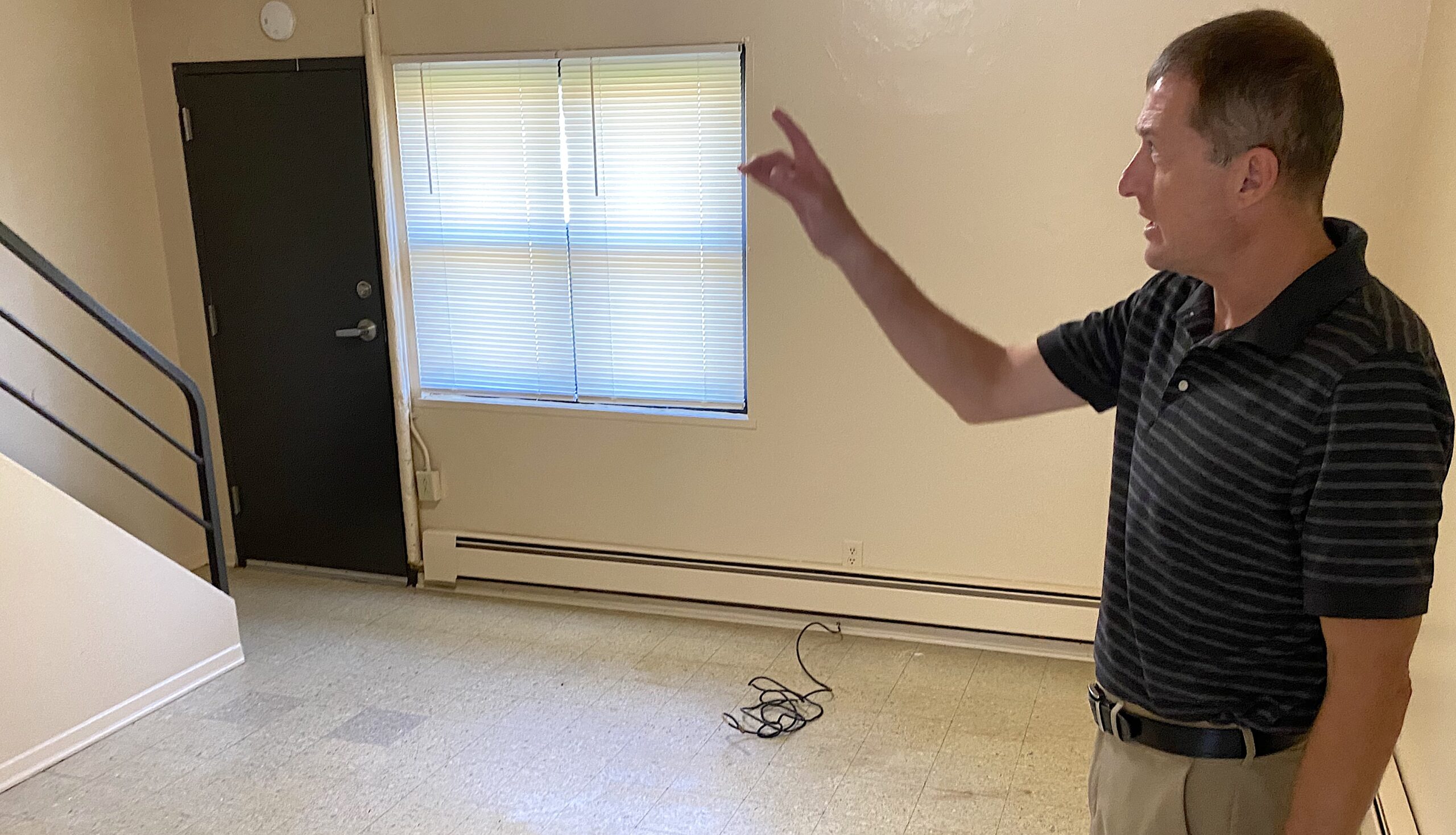Quincy Housing Authority gets $4 million from HUD programs for lead-based paint, asbestos flooring abatement

QUINCY — The Quincy Housing Authority recently received $4 million in grants to address lead-based paint in Indian Hills apartments and asbestos flooring in units throughout the city.
Jerry Gille, director of the Quincy Housing Authority, learned last week the QHA is receiving $1.75 million through the Capital Fund Lead-Based Paint program and $2.25 million through the Housing-related Hazard Capital Fund program. The U.S. Department of Housing and Urban Development (HUD) administers both programs.
These dollars are on top of the $1.3 million in Capital Fund money the QHA received this year from HUD for maintenance and modernization. Gille said $200,000 annually is taken out of the Capital Fund money to pay off a bond used to pay to build the QHA administration building at 540 Jefferson in 2007.
“There’s $200,000 a year we just don’t see,” Gille said. “Right now, out of $1.3 million, we will realize $1.1 million. In the past, it’s been as low as $500,000. The point is that is not enough money to adequately address all the needs for 350 public housing units. These are very old public housing units that are expensive to fix and hard to fix. That’s what that money is used for.”
The Capital Fund Lead-Based Paint program is a competitive grant program that provides funds to public housing authorities to identify and eliminate lead-based paint hazards. Public housing authorities can use the funding to perform lead-based paint evaluations and control lead-based paint and hazards.
Gille first applied for the maximum request of $1 million from the program in 2019. The QHA was the only public housing authority in Illinois that year to receive the maximum. A risk assessment of the Indian Hills apartments, built in 1942, determined lead-based paint was used mostly on baseboards, window sills and interior doors.
A St. Louis-based company eliminated the lead-based paint in 64 multi-bedroom units before the $1 million grant was exhausted.
HUD offered the grant again in 2020, but Gille opted not to apply.
“It was COVID, and this place was on fire at that point with COVID problems,” he said. “I’m like, ‘No, I’m not doing it yet. Hopefully they’ll keep that on the table.’”
HUD offered the lead-based paint program this year, raising the maximum amount for a request to $5 million. Also added was the Housing-related Hazard Capital Fund program, which provides funds to public housing agencies to identify and eliminate housing-related hazards such as mold, carbon monoxide, pest infestation, radon and fire hazards.
All of the QHA’s units — Indian Hills, Lampe Hi Rise at Fifth and Broadway, the Cherry Street Apartments at 401 Cherry and the 29th Street Apartments at 29th and Broadway — have floors with nine-inch by nine-inch asbestos tiles.
“Asbestos isn’t going to kill you if you walk on it and look at it all day,” Gille said. “But when you break it up and the dust gets in there, that’s when it’s dangerous.”
Gille believes the $1.75 million lead-based paint grant will take care of the rest of the apartments in Indian Hills.
“We asked for $2.25 million on asbestos,” he said. “That was a complete guess, to be honest with you. We have no good feel for how much asbestos work is going to cost us. What we know is asbestos flooring is in all our sites, and we can use that money at all our sites.”
Gille hopes for work on the asbestos abatement to begin next spring. He says the two grants are critical to maintain the QHA properties, because the general Capital Fund dollars aren’t enough.
“When I see grants for us, I typically try to go after them,” he said. “We have to supplement that annual capital fund amount, because we can’t even come close to meeting the needs of these units. We’re constantly delaying projects. You do less work. You accomplish less things. We have to do a five-year rolling plan with HUD. These are the things that we want to spend future capital fund dollars on. We have to submit that plan annually, but we constantly defer work in that plan.”
Gille said he’s looking at replacing the roofs at Indian Hills in the future. That makes receiving the two HUD grants now “so huge.”
“At any given time, lead paint is a priority for us,” he said. “Asbestos flooring is a priority for us, and we would have to take that money out of our own dollars. We would have to cannibalize our day-to-day fixing stuff to pull something like that off and do it over multiple years. This new source of funding allows us to jump in and knock this thing out.”
Miss Clipping Out Stories to Save for Later?
Click the Purchase Story button below to order a print of this story. We will print it for you on matte photo paper to keep forever.

